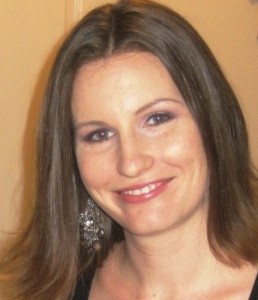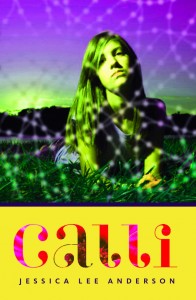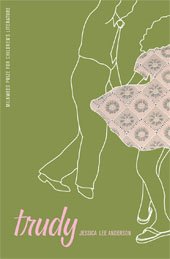 Jessica Lee Anderson is an American author of fiction and nonfiction books for children. She was born in 1980 in Phoenix, Arizona but she now lives and writes near Austin, Texas. In this interview, Jessica talks about her books, her future projects, reading and writing.
Jessica Lee Anderson is an American author of fiction and nonfiction books for children. She was born in 1980 in Phoenix, Arizona but she now lives and writes near Austin, Texas. In this interview, Jessica talks about her books, her future projects, reading and writing.
Voicu Mihnea Simandan: You have been a story writer for most of your life. How has your writing evolved over time?
Jessica Lee Anderson: I’ve always loved reading and making up stories. When I was younger, my mom read Little Women by Louisa May Alcott. I felt drawn to the character of Jo March and wanted to write just like she did. I loved to make up stories, but often struggled in school. During my high school years, I tried to write my first novel, but the middle of the book ruined it all. Even though this book was not a success, the experience taught me much about the writing process, especially about revision. I attempted my next novel when I became a teacher and this one was a success (Trudy). I’m constantly learning new techniques and signing up for workshops and critiques.
VMS: Where did the ideas for Calli come from?
JLA: I read The Window by Michael Dorris a long time ago, and this story made me think about what life as a foster child is like as well as their family members. When my husband and I considered becoming foster parents years later, the story of Calli started to take shape.
VMS: In Trudy (2005) you tacked some very sensitive issues. Why is it important for young readers to understand Alzheimer’s?
JLA: Trudy is very personal to me as I watched my grandmother slowly slip away to Alzheimer’s. It was a very painful process for our entire family to go through, and unfortunately, countless families experience similar heartbreak. Hopefully, young readers will gain insight and compassion.
 VMS: You’ve also branched out from children’s books and have written some well-received young adult novels. How did you find the transition?
VMS: You’ve also branched out from children’s books and have written some well-received young adult novels. How did you find the transition?
JLA: The transition has been quite enjoyable as well as challenging. I tend to write for a variety of ages to stay productive and explore different ideas. For example, when I’m between novels, I’ll write short stories or magazine articles to vary things up. I usually pair the readership age with the subject matter.
VMS: Do you employ similar skills when writing books targeted for an older readership?
JLA: Writing for younger readers has taught me to be extra cognizant of word count, word choices, age appropriateness, and structure.
VMS: Some people believe that children no longer read and, with the availability of affordable e-readers, many believe that, sooner or later, children will no longer want to hold books in their hands. Please comment.
JLA: My twelve year old nephew warmed my heart recently when he expressed his nostalgia and appreciation for books. I feel the same way as my nephew, and like him, I also appreciate e-readers. I find my e-reader convenient, especially when I had shoulder surgery and couldn’t hold a traditional book in my hands for weeks. It is my hope that children and teens continue to read, even if the manner in which they read changes.
VMS: You maintain an excellent website. How important is it for writers these days to be “out there” on the Internet, interacting with their fans?
JLA: I’m lucky to have such a wonderful friend, PJ Hoover, who designed my website. It is great to hear from fans and to also have information available for those interested, etc. I think writers greatly benefit from being “out there” on the Internet, but should do only what they’re comfortable with.
VMS: You’ve recently been on quite a few author visits. What were some of the highlights of these visits?
JLA: I love visiting schools and connecting with my target audience. I recently spoke with groups of students in Minneapolis and St. Paul—they made me feel like a rock star. The students inspire me, and there is nothing as special as hearing someone say that they’ve become more interested in reading and writing after a visit.
 VMS: Do you still read children’s books and young adult fiction?
VMS: Do you still read children’s books and young adult fiction?
JLA: I mostly read children’s books and young adult fiction to stay current and to also stay motivated. I find that children’s books and young adult fiction are some of the most fascinating, tightly-written reads!
VMS: What book are you working on right now?
JLA: A Texas Bigfoot story! Everdil Jackson thinks she can repair her parent’s broken relationship and grow closer to her friends by proving Bigfoot’s existence after an unexpected encounter. Everdil ends up proving more than she bargained for, including her inner strength and ability to adapt.
VMS: What is your writing routine?
JLA: My typical writing day starts with a large cup of coffee or tea in the morning. I check my email and then try to research, dig into a manuscript, or revise depending on where I’m at in the writing process. I’ll write for a couple of hours, take a break for lunch, and then write some more in the afternoon if possible. If I’m close to finishing a draft or a revision, I’ll write well into the evening.
VMS: What advice would you give to aspiring writers?
JLA: Read as much as you can, devote solid blocks of time to writing, and don’t be afraid to revise or get yourself out there!
VMS: Thank you for your time.
JLA: And thank you so very much. J
Watch a video promotion for Calli.
Voicu Mihnea Simandan
Bangkok, Thailand
November 2, 2011

